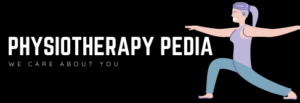Table of Contents
Cardiovascular System (CVS)
CVS is a transport system with three main components including heart, blood vessels, and blood itself. In this system the heart act as a pump, blood vessels act as a delivery route and blood contains oxygen and nutrients.
Heart
Heart is a pump which circulates blood through the vascular system. The size of the heart is about the same size of fist. Length is about 12 cm long, 8.5 cm width and 6cm thickness. The heart lies obliquely in mediastinum.
Base of heart: formed by two atria in superior portion of heart, located at 2nd intercostal space.
Apex of heart: at the tip of left ventricle, in the 5th intercostal space at mid-clavicular line.
Point of maximum impulse
The apex of heart, where the portion of heart strikes chest wall. It is the anatomic landmark of apex.
For example in patients with left ventricular hypertrophy, the point deviates laterally due to increase in left ventricular mass.
Layers of heart
Wall of heart is composed of 3 layers
- Pericardium
- Myocardium
- Endocardium
Pericardium
The outer layer is doubled-walled, the pericardium. It is further divided into 2 layers named as outer parietal pericardium (tough, fibrous layer, irregular connective tissue) and inner visceral pericardium (thin, smooth, moist serous layer). There is pericardial space between these two layers which contains fluid to reduce friction during cardiac contraction.
Myocardium
Myocardium is the middle layer of the heart which performs pumping action. It is the thickest layer which is composed of cardiac muscles. The myocardial cells are divided into 2 groups according to their functions: mechanical cells and conducting cells. It delivers oxygen and nutrients and removes waste products i.e carbon dioxide.
Endocardium
Endocardium is the innermost layer of the heart, consisting of squamous endothelium. It provides a smooth, elastic and non-adherent surface for blood collecting and pumping. This layer is continuous with tissue of valves and endothelium of blood vessels.
Chambers
The heart is divided into 2 halves through longitudinal septum. In the right side, blood receives deoxygenated blood which is returning from the body, while oxygenated blood is in the left side (returning from lungs). In each half of heart, there are two chambers: Superiorly two atria and inferiorly two ventricles
- Right atrium
- Left atrium
- Right ventricle
- Left ventricle
Right atrium
Deoxygenated blood received by the right atrium from superior and inferior vena cavae and coronary veins. It pumps blood through the right atrioventricular opening into the right ventricle.
There is interatrial septum which separates the right and left atria.
There are two parts of inferior surface of right atrium:
- Sinus Venarum
- Atrium Proper
Left atrium
Oxygenated blood received into the left atrium through four pulmonary veins. It pumps into the left ventricle through the left atrioventricular opening. According to anatomical position, it forms the posterior border (base) of heart.
The inferior surface or left atrium divided into two parts:
- Inflow Portion
- Outflow Portion
Right ventricle
It receives deoxygenated blood from the right atrium and pumps into the pulmonary artery through pulmonary opening.
It is divided into two portions: inflow and outflow which is separated by supraventricular crest.
The right ventricle is triangular in shape and forms the majority of the anterior border of the heart.
Interventricular Septum: Separates the right and left ventricles.
Left Ventricle
It receives oxygenated blood from the left atrium and pumps into the aorta through an aortic opening. It is divided into two portions: inflow and outflow.
Valves of heart
The valves of the heart make sure the blood flows in only one direction.
There are Four Valves of heart:
- Atrioventricular: includes the tricuspid and bicuspid (mitral) valve.
The atrioventricular valves are located between atria and ventricles which close during the start of systole (ventricular contraction) and produce first heart sound.
- Semilunar: includes the pulmonary and aortic
These valves are located between ventricles and outflow vessels which close at the start of diastole (ventricular relaxation) and produce 2nd heart sound.
Conducting System
This system is the collection of nodes and specialized conducting cells.
It consists of:
- Sinoatrial node (located at junction of right atrium and superior vena cava). It is also known as the pacemaker of the heart.
- Atrioventricular node (located at an inferior aspect of the right atrium). There are several parasympathetic autonomic ganglia at the posterior side AV node, which slows the cardiac cycle. The major function of this node is to slow down the cardiac impulses to allow time for ventricles to fill.
- Atrioventricular bundle (bundle of His)
- Purkinje fibres
Process of Conduction
Electrical impulses arise in sinoatrial nodes, these impulses travel down to AV nodes through 3 conducting pathways: Anterior tract of Bachman, Middle tract of Wenckebach, and Posterior tract of Thorel. The conducting fibers from AV nodes join to form “Bundle Of His”. The bundle divides into right and left to carry impulses into right and left ventricles. The left bundle branch further divides into left anterior and left posterior bundles.
These bundles give rise to thin filaments called Purkinje fibers. The fibers extend from the apex of each ventricle and penetrate the heart wall to myocardium. Electrical stimulation of Purkinje fibers help in ventricular contraction.
Reference
- Essentials of cardiopulmonary physical therapy ELLEH HILLEGAS 6th edition
- https://healthengine.com.au/info/cardiovascular-system-heart
- https://teachmeanatomy.info/thorax/organs/heart/
- https://training.seer.cancer.gov/anatomy/cardiovascular/heart/structure.html



POST REPLY